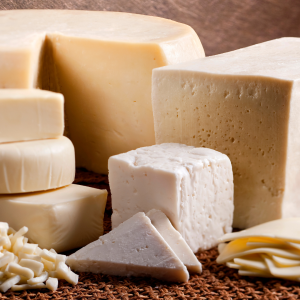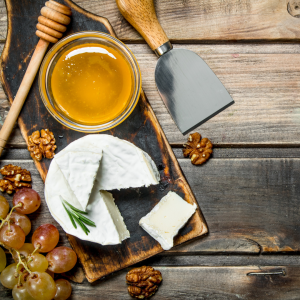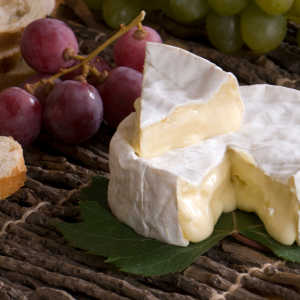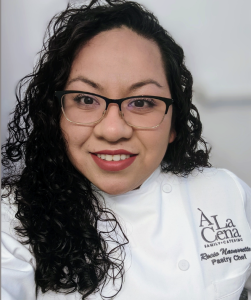Nothing like a delicious cheese board accompanied by a good wine and of course shared with friends or your other half enjoying a delicious talk (gossip) or “chismear”. Whether you laugh or kiss, it never hurts to know how to combine your good wines with delicious cheeses.
As you know we are located in the wonderful Napa Valley, well known for its good wines , generous lands that give you those delicious fruits that are fermented in those wooden barrels with those delicious touches of spices, smells and flavors! I know, reading about wines will peak a craving but on this occasion I want to talk about its generous companions… ” the cheese ” .
And why do I call them generous? Well, because they do not compete to steal the attention, they prefer to accompany and highlight those flavors that wine makes its partner the protagonist, making it the delicacy of the gods.
Therefore, on this occasion, let’s give light to the cheese board!
I still remember the first time I ate a gourmet cheese and what I will tell you is not a lie. In a restaurant where I worked, it was a fine dining French restaurant, those who know me know which one it was. The point is I had just arrived from Mexico and of course I didn’t eat this type of cheese there. And well, if I tasted wine before, I wouldn’t know how to describe it since they are two very different things. And to put it in perspective, I knew much less how to eat fine cheeses lol.
I did not know that there was a marriage between cheese and wine.
Then that day Lazaro, yes our dear Chef, he gave me blue cheese to try!! Can you imagine? What it means that a Mexican Lady suddenly for the first time in her life was eating blue cheese, well so you understand me, my grandmother would have told me that for sure I would die from eating that spoiled cheese ha ha ha ha! (I would like to see your face when reading this) well yes, the thing is that nope, I didn’t die! I survived to tell this anecdote for you lol!
Well let’s go back to the point of the story, it turns out that He gave me to try this blue cheese with a crouton and a small amount of honey, yep, I thought don’t do it!! But I thought mmmm why would Lazaro want to kill me?! If he barely knew me, He looks like a good person and with a curious and challenging face at the same time… so why disappoint him? Haha! Well, I ate it, obviously sure of myself ?. Well, to be honest, it was a strong flavor that I might not love, but I didn’t dislike it!It was a strong flavor but the honey gave that touch of country to that captivating flavor and with the crunchiness of the bread. It was kind of nice to taste. and obviously afterwards he told me to have some wine, if I remember correctly it was a Pinot Noir from Domaine Chandon (here is the commercial for the brand ?) It was how good my good friend Remmy (from Ratatouille) “Would say it was an explosion of flavors”. Even to be more honest, the scene where there is an explanation of flavors in particular happened to me with Brie Cheese, strawberries and Champagne. ?
Over time I have learned to enjoy it and I am grateful that someone introduced me to that path, Thank you Chef!
Blue Cheese or Bleu Cheese

What is the difference? Well, not much really, it’s about geography since if it’s made in France it’s Bleu and if not then Blue is perfect. This is how it is, like the fact that you
can only call Champagne the one that is made in France and in the rest of the world we can only call it sparkling wine. Or Tequila, It is only Tequila that comes from Mexico and if it is not from Mexico… it’s simple, it’s not Tequila lol. (I’m sorry but it’s true ?).
You can find a wide variety of blue cheeses. But what is the difference? It’s really just a categorization of many varieties of cheese that are best known for the blue streaks of mold in them.
Yes, as you read it, it is correct. It’s moldy and they add it on purpose (For those who didn’t understand my comment in the introduction about why my grandmother would say that I would die from eating that, well there it is ? ) Obviously this is not the case, since the process in which Penicillin is added to the cheese, which is the most common, is safe and with rigorous protocols. Do not be afraid, you can enjoy it at will if it is the case that you like it and you are not disgusted to try it. You‘ll be safe!
All blue cheeses are made from either cow, sheep or goat’s milk and have a mold added to them. The mold can be added at different times before or after curds are formed and can be many different varieties of mold
Now the blue cheeses that you will find to mention a few are:
Gorgonzola: This cheese comes from a small region in northern Italy. Made from cow’s milk or goat’s milk. Fermented with Penicillium Glaucum.
Roquefort: From a small region in Southern France. Made from Sheep’s Milk. Fermented with penicillium roqueforti.
Stilton: From England, Made from Cow’s Milk. Fermented with Penicillium Roqueforti.
Maytag Blue Cheese: is produced in the US, Iowa to be exact. It is made by Maytag Dairies and thus gets its name from the folks who invented their version (instead of a region of the US). It is made from cow’s milk.
Cabrales: Is a blue cheese made in Spain.
Danish Blue: Is it made where? That’s right, You got it!
In general, the younger the cheese, the more mild it will be. The younger cheeses are also creamier. The older cheeses are stronger and more crumbly.
In this case let’s say that the Danish Blue Cheese is mild and makes a good parity with a Vintage Port wine. And a Roquefort Cheese with a strong end makes a good parity with a Sauternes Wine.
You can also find it in some dishes. Sometimes you will see it in salads or in fillings, on top of an appetizer and even in a dressing. You can eat it in a crouton or cracker, with a little bite of honey or jam. Maybe with nuts or dried fruit. Alone or accompanied, believe me you can’t miss it!
Are you ready for one more? I know it’s a lot of information, but I hope you find it interesting and useful. Believe me I tried to summarize the information for you. But not all cheeses have the same amount of information. I just want to help you be an expert!
Gruyère Cheese

Is a hard Swiss cheese, made with cow’s milk. Is sweet but slightly salty, with a flavor that varies widely with age. It is often described as creamy and nutty when
young, becoming more assertive, earthy, and complex as it matures. When fully aged (five months to a year), it tends to have small cracks that impart a slightly grainy texture.
Do not think that this cheese is exempt from a fight since even though it is a Swiss cheese and that it is named after the region of Gruyere, Switzerland. Our dear French friends also have their Gruyère cheese and since both brands are established as products and geographical brands they have to be sold with clear indications so the French cheese is marked as French Gruyère but in the United States it was ruled that Gruyère was already a general term, so here they can not sell it as a trademark. ( Curious fact)
In short, although this cheese can be parity with a good Pinot Noir. Gruyère is used in many ways in countless dishes. It is considered a good cheese for baking, because of its distinctive but not overpowering taste. It is a good melting cheese, particularly suited for fondues, along with Vacherin Fribourgeois and Emmental.
Brie Cheese

Brie is a soft cow’s milk cheese named after Brie, the French region from which it originated. It is pale in color with a slight grayish tinge under a rind of white mold. ( Be honest, if you just found out right now that that white layer that covers it is mold? ?)
The rind is typically eaten, with its flavor depending largely upon the ingredients used and its manufacturing environment. It is similar to Camembert, which is native to a different region of France. Brie typically contains between 60% and 75% butterfat, slightly higher than Camembert.
This cheese is not selfish in any way as Brie is a style of cheese and not a registered trademark as such. Even if there are some protected regional Brie Cheese.
Brie may be produced from whole or semi-skimmed milk. The curd is obtained by adding rennet to raw milk. inoculated with cheese culture (Penicillium candidum, Penicillium camemberti, or Brevibacterium linens), and aged in a controlled environment for at least four or five weeks.
If left to mature for longer, typically several months to a year, the cheese becomes stronger in flavor and taste, the pâte drier and darker, and the rind also darker and crumbly, and it is called Brie Noir (French for ‘black brie’).
You can accompany this cheese with jam, honey or nuts, in a delicious crouton and make a good parity with a good Prosecco Sparkling Wine
Camembert Cheese

Is a similar soft cheese that is also made from cow’s milk. Camembert is a much more recently developed cheese and is based on brie. However, there are differences such as its origin, typical market shape, size, and flavor. Camembert comes from Normandy. The cheese typically has a more pungent aroma than does brie. In terms of taste, Camembert has a stronger, slightly sour, and sometimes chalky taste. The texture of Camembert is softer than that of brie, and if warmed, Camembert will become creamier, whereas brie warms without losing as much structure.
This cheese can be put on low heat to wait for it to melt inside if you prefer and it is delicious. Accompany it with dry or fresh fruits, nuts, and bread. Hot or cold but you have to try it. You can pair this cheese with a Sparkling Wine and if there are strawberries in season, even better!
Well I think that we will stop here and we will have to do part two of this blog. I don’t want to exhaust you, much less lose your interest!
If you liked it, leave me your comments, share this information and if you would like me to talk about a specific cheese for the second part, let me know. Thank you!
To be continued……

By Pastry Chafe Rocio Navarrete
